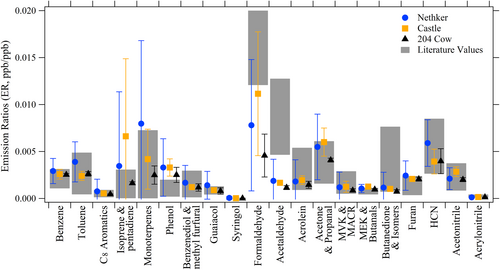
Emission Factors From Wildfires in the Western US: An Investigation of Burning State, Ground Versus Air, and Diurnal Dependencies During the FIREX-AQ 2019 Campaign
Marc N. Fiddler, Chelia Thompson, Rudra P. Pokhrel, Francesca Majluf, Manjula Canagaratna , Edward C. Fortner, Conner Daube, Joseph R. Roscioli, Tara I. Yacovitch, Scott C. Herndon, and Solomon Bililign
Journal of Geophysical Research: Atmospheres
Journal of Geophysical Research: Atmospheres, 129, e2022JD038460
Publication Date: January 5, 2024
Open Access ©This work is distributed under the Creative Commons Attribution 4.0 License.
Abstract.
Emission factors (EFs) are crucial in understanding the effects of wildfire emissions on air quality. We examined the variability of EFs of three wildfires (Nethker, Castle, and 204 Cow) during the 2019 Western US wildfire season using the Aerodyne Mobile Laboratory (AML) and compared them to previous studies. The AML sampling captured the high degree of variability present in wildfires, and we report results for a range of combustion conditions that is more extensive than previous field and laboratory studies. For instance, we captured emissions from freshly started flaming fuels and we report rare EF measurements at very high modified combustion efficiencies (MCEs); MCEs >0.9. Differences in emissions between AML-observed wildfires were attributed to burning state/MCE rather than fuel type. A comparison of EFs versus MCE was made and linear fits were compared to previous observations to reveal important differences that incorporate these high MCEs. For some species, there remains an EF dependence on MCE at these high values, while others reach a minimum value and exhibit either no or a weak dependence above it. EF differences were found for many of the studied compounds when comparing ground-based and airborne observations, with generally greater airborne EFs possibly due to photochemical oxidation. The largest differences were from monoterpenes and acetaldehyde. Comparisons were made between AML-observed wildfires, aircraft observations, and the values in literature for EFs and emission ratios, with mixed agreement due to the high degree of variability caused by differences in MCE. Differences in MCE drove the diurnal EF differences.
